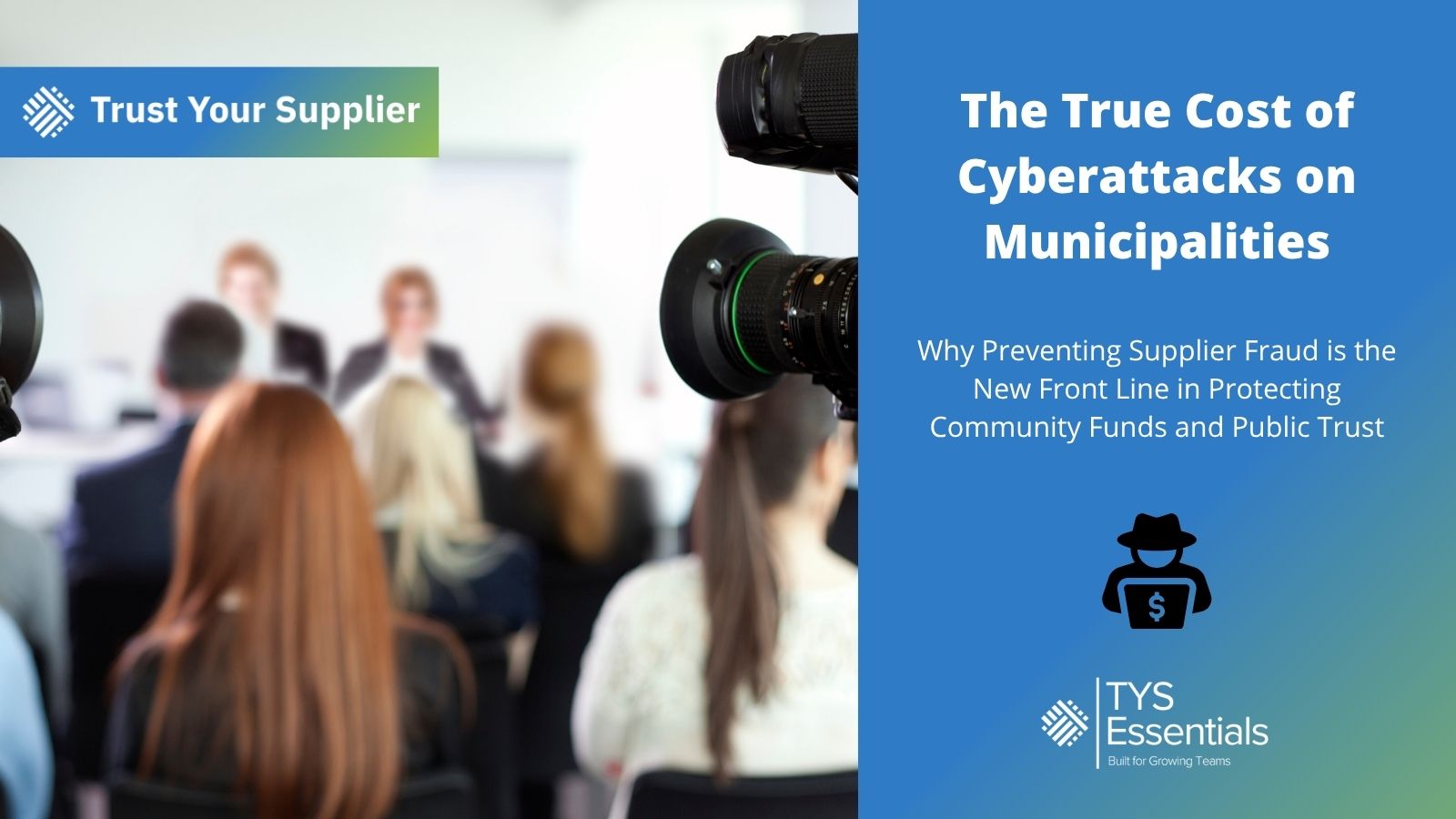The True Cost of Cyberattacks on Municipalities
Why Preventing Fraud is the New Front Line in Protecting Community Funds and Public Trust

Ask any mayor, county commissioner, or city manager what keeps them up at night, and cybersecurity is quickly climbing the list. For municipalities, protecting against digital threats isn’t just an IT issue — it’s a matter of financial stewardship, public trust, and supplier risk management.
In recent years, local governments across the U.S. have become prime targets for cybercriminals exploiting weaknesses in vendor and supplier networks. These attacks may not involve ransomware or high-profile data breaches. Often, they start with something deceptively simple: a fake invoice, a spoofed vendor email, or a fraudulent bank account update.
A Costly Pattern Emerging
- Baltimore, Maryland (2025): A fraudster impersonating a legitimate vendor submitted a fake contact form through the city’s supplier portal. Accounts payable staff updated the vendor’s bank information without verifying identity, resulting in two payments totaling over $1.5 million. While some funds were recovered, more than $800,000 is still outstanding. (CBS News, Aug 2025)
- Tallahassee, Florida (March 2024): The city unknowingly paid over $1 million to a “scam vendor” posing as a legitimate contractor. Investigations by the Tallahassee Police Department’s Financial Crimes Unit and the U.S. Secret Service are ongoing, but most funds remain unrecovered. (WCTV, July 2025)
- LeClaire, Iowa (2021): Over four months, scammers impersonated three separate vendors and tricked city employees into wiring $222,000 to fraudulent accounts. Roughly half was recovered, but the incident highlighted vulnerabilities in email-based supplier verification. (The Gazette, Sept 2021)
The Real Price Tag: Beyond the Checkbook
While headlines focus on dollars stolen, the true cost of a cyberattack extends far beyond financial loss. Municipalities face:
- Months of operational disruption
- Staff overtime and diverted resources
- Legal fees and insurance claims
- Erosion of public trust
According to IBM’s Cost of a Data Breach Report 2025, the average public sector breach costs $2.6 million to contain and remediate. Many municipalities operate with lean IT teams, limited training budgets, and decentralized systems, creating conditions where supplier fraud is not just possible, but probable.
When a supplier’s credentials are falsified or a fraudulent payment slips through, the damage ripples outward: procurement teams lose efficiency, finance departments shoulder losses, and leadership faces public scrutiny.
Why Supplier Relationships Are the Weak Link
Cybercriminals know municipal supplier management is often an easy entry point. Manual checks and email communications in supplier onboarding create fertile ground for deception.
Decentralized procurement worsens the problem. Departments such as utilities, transportation, and housing may maintain separate vendor lists, creating blind spots. Without automated supplier verification, shared supplier data, or real-time monitoring, anomalies often go undetected until it’s too late.
A Smarter Way to Prevent Fraud Before It Happens
Prevention doesn’t require a massive overhaul — just smarter systems. TYS Essentials offers municipalities practical tools to strengthen supplier onboarding, supplier fraud prevention, and supplier management. Key benefits include:
- Supplier verification and discovery: Confirm every vendor’s identity and validates their banking details
- Compliance automation and audit readiness: Monitor supplier data, detect anomalies, and enforce policies
- Risk intelligence: Continuous monitoring of supplier signals to flag potential fraud early
- Scalability and efficiency: Streamline workflows to reduce human error and improve procurement efficiency
With TYS Essentials, municipal teams can replace manual forms, unverified emails, and phone calls with real-time data and automated workflows. The result is stronger compliance, fewer vulnerabilities, and greater confidence in every payment made.
The Cost of Prevention vs. Recovery
For cities and counties, the lesson is clear: prevention costs far less than recovery. Investing in supplier fraud prevention and verification tools protects budgets, reduces operational disruption, and preserves public trust.
As Baltimore, Tallahassee, and LeClaire illustrate, even a single lapse can become front-page news. With stronger supplier controls, automated risk monitoring, and verified supplier data, municipalities can focus less on damage control — and more on delivering essential services to their communities.
Take the Next Step to Protect Your Community
To learn how your municipality can strengthen fraud defenses and simplify supplier management:
- Explore the features and tailored capabilities of TYS Essentials
- Review TYS Essentials pricing
- Request a demo to see how TYS can help your team stay ahead of fraud and cyber risk
- Ready to deepen your knowledge? Join us on November 13!

